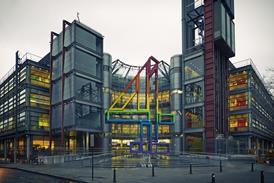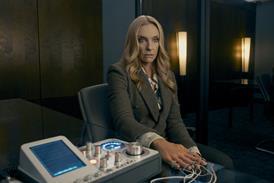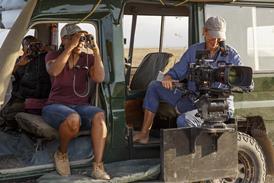Remote web-based editing technologies would radically impact on post-production by shortening schedules and changing the way people work. Adrian Pennington reports.
The internet may be revolutionising media distribution, but its implications have barely impacted on production itself. That looks set to change as web-based applications begin to substitute traditional post-production methods. Already trialled by a number of producers, the technology has potentially huge ramifications.
“Every once in a while, a technology comes along that alters the face of the industry. Browser-based working is that game-changer,” says Greg Hirst, business development director of Forbidden Technologies, whose Forscene toolkit was used by Endemol to speed up production on C4’s The Sex Education Show and Living’s Rehab.
Transporting video files over the internet for executive review and approval is routine. The exchange of sequences between facilities, often for insertion of CGI, is also a familiar and growing part of the post chain. For example, Sohonet, which is connected to dozens of film and TV facilities in LA and London, began operating its dedicated network 15 years ago, speeding up the delivery of rushes from point to point, where they would previously have been couriered on tape.
Meanwhile, as broadband speeds have increased, it has become more feasibleto turn to web-based logging and even simple edits, where the physical media remains on a remote server and the applications are hosted online. The capability to review footage via mobile phones is already possible.
“Historically, logging meant watching DVDs and typing into Word or Excel,” says Evolutions operations director Owen Tyler.
“The logs were completely detached from the process and their value lost. We are now at the stage where metadata can be applied directly to the media by the production team wherever they can access the internet.”
Evolutions and Talkback Thames devised such a workflow for Hospital Heroes, in which logging was conducted at Talkback’s offices by a team making early editorial decisions about which stories to follow.
“We were capturing multiple stories each day and were able to start sorting which ones worked and which didn’t while they were still fresh in our minds,” says Esther Johnson, head of production, factual features at Talkback Thames. “Doing so also halved time in the edit.”
Multiple options
There are a number of web-based video systems on the market that broadly offer the same set of asset management, indexing and annotating tools. Rushes are typically ingested once with a full-resolution version stored at the facility and a second, proxy copy is loaded online for review and rough assembly.
All changes made to the material will be automatically sync’d to the online edit, removing the need for a conform. Material can also be uploaded remotely, which is particularly useful for news and documentary field work. Crucially, the systems are password-protected, simple to learn and can be operated with standard keyboards without requiring the installation of special software or hardware.
“You don’t have to buy dedicated workstations or individually upgrade and engineer systems as you do with existing kit. Investment savings are huge,” says John Miller, vice president of worldwide sales for Maximum Throughput, which markets Max Edit.
Producers are turning to web-based systems as alternatives to FTP sites or privately managed services such as Sohonet or Beam.tv, firstly for review and logging procedures, but also with an eye on its additional benefits.
Clear Cut Pictures used Apace technology to post BBC3’s Dog Borstal and is keen to develop its web-editing tools. CBBC trialled Forscene in-conjunction with Platform Post on kids’ drama Danni’s House, made by The Foundation Scotland. How-ever, Platform managing director David Tasker has reverted to FTP because he found it quicker. Envy uses web-service Nice Spots while North One has used Forscene for multiple projects, including including a new Kerry Katona special for MTV. EVS has developed IP Edit, linked to its IP Director logging system, which the BBC may use for remote presentation and analysis of the 2010 World Cup in South Africa.
Not all programming is suitable for web workflows. Fast-turnaround news, sports and factual programming will benefit most, but even there some craft finishing remains vital.
Fast turnaround
“You wouldn’t use these techniques on drama,” says Miller. “[But] where the pressure is on to generate quick turnaround and improve the shooting ratio, to control costs, view rushes instantly or to reuse archive material, these technologies are finding favour.”
The editing functionality of Apace Systems’ View is “rudimentary”, admits vice president Jeanclaude Toma. “We are not replacing editing platforms but providing the ability for a producer to rough cut material and add instructions instead of waiting for the editor to get hold of a copy in a suite.”
Editing systems like Avid or Final Cut are already an inexpensive, off-the-shelf commodity. Logically, these tools could eventually live online and be operated in a form of ‘cloud computing’, with the heavy lifting performed in an anonymous data farm.
“This is the future of most post-production applications. The cost of buying individual workstations for individual applications in costly prem-ises is no longer justified,” says Miller.
Facilities that have made a business out of large capital investment in kit may need to rethink. If craft talent can work on material from anywhere, perhaps the post-production resource of the future will be less a destination than a brand that manages a dispersed collection of individuals.
Increased resolution
“You are no longer tied to physical location or hardware,” says Hirst. Video resolution will only increase with bandwidth and functionality is being added all the time. Max Edit has allied with Chyron to enable greater on-the-fly graphics creation for news and sports programming. Forbidden plans to implement basic DVEs and colour correction in its product.
“Web-based editing functionality is not yet sophisticated enough yet to go beyond basic edits,” says Malcolm Cowan, consulting editor of BBC Studios and post-production, who is advising on the post production operation for the FIFA World Cup 2010.
“However, remote web-based access of low-resolution proxies does have production benefits since not only can we remotely log and review content, it enables us to begin making editorial decisions far quicker and more conveniently than before.”
Hospital Heroes Cinegy
Talkback Thames’ Hospital Heroes, a 20 x 45-minute observational documentary for the BBC, followed the staff at London’s King’s College Hospital. Rushes shot on Z1s were uploaded daily over six weeks at Evolutions for immediate editorial decisions to be made by the producer.
Evolutions has deployed the Cinegy media management system throughout its facility, which was tweaked to allow Talkback the remote ability to log and assembly edits before being applied back to the Avid with no need to go back and digitise the selected shots.
“With an evolving narrative, rather than one split into multiple stories, it would [generally be] harder to make editorial decisions earlier on,” says Esther Johnson, Talkback head of production for factual features. “But in this case, the workflow made it easier for edit producers to tell a better story and editors to edit rather than wade through endless rushes.”
Impressed by its efficiencies, Johnson plans to revisit the process in future. “It makes fantastic sense when you need speed to market. It also changes the way people work. You can’t underestimate the time needed to plan your workflow but when you get it right, you don’t just save on the offline suite costs, you’re saving on the conforms, the editor, and having to visit the post house to monitor progress. You’re shortening the overall schedule.”
Kill It, Cook It, Eat It Forbidden Technologies’ Forscene
Dragonfly, part of the Shine Group, used Forscene web-based editing for the production of BBC3 cookery show Kill It, Cook It, Eat It, which aired in January.
Rushes were digitised into Avid at Blue and simultaneously uploaded to Forscene for the production team in London and in Scotland, where the shoot was taking place, to review and log. Series producers and directors were able to make shot selections and rough cut editing before exporting from Forscene to auto-conform for the online edit in Avid.
The process cuts down on review and approval DVDs thus reducing revenue that a post house would normally make.
“That market has been dwindling anyway and there’s no point putting our head in the sand,” says Blue’s post-production director Sara Hill.
“We’d rather work with new systems like Forscene, which particularly benefit producers with reality or ob-doc productions that process large volumes of rushes and have a need for fast turnaround,” she adds.
“It doesn’t replace editing,” Hill stresses. “It complements existing post processes.”

























No comments yet